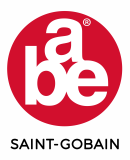What is waterproofing?
Waterproofing is the process of making a structure water-resistant or impervious to water ingress under specified conditions. It serves as a preventative measure, rather than a reactive solution, aimed at protecting buildings from moisture-related damage. Effective waterproofing ensures the structural integrity, longevity, and habitability of buildings by preventing water intrusion.
Sources of Moisture Ingress
Moisture can infiltrate buildings through various pathways, including:
- Rainwater: Direct precipitation, particularly problematic in areas with inadequate drainage or roofing systems
- Groundwater: Capillary rise or hydrostatic pressure, especially in basements and foundations
- Airborne moisture: Humidity and condensation, often exacerbated in poorly ventilated spaces

Inadequate Waterproofing
The absence or failure of waterproofing systems can result in:
- Biological damage: Growth of mould and mildew, posing health risks such as respiratory issues and allergic reactions
- Structural damage: Wet rot in timber, corrosion of steel reinforcements, and degradation of concrete elements
- Aesthetic and surface damage: Efflorescence, peeling paint, crumbling plaster, and cracked tiles
- Economic impact: Increased maintenance costs, reduced property value, and the need for extensive repairs

Key Risk Factors
Several factors contribute to waterproofing failures, including:
- Design and construction flaws: Inadequate detailing, improper slope, and insufficient drainage planning
- Specification errors: Selection of incompatible or substandard materials
- Application failures: Poor surface preparation, incorrect layering, or insufficient curing time
- Mechanical damage: Physical wear, punctures, or movement-induced cracking

Waterproofing Systems:
A comprehensive waterproofing system typically includes:
- Primary waterproofing product: The main barrier against water ingress (e.g., bitumen, acrylic, cementitious, polyurethane)
- Support products: Membranes, tapes, and reinforcing fabrics that enhance the system’s durability and performance
- UV Protection: Coatings such as silvakote® that shield non-UV-stable materials from degradation due to sunlight exposure

Considerations:
Waterproofing systems are subject to environmental and mechanical wear. Key considerations include:
- Product Lifespan: All systems degrade over time and require eventual replacement
- Maintenance Requirements: Regular inspections and reapplications are necessary to maintain system integrity
- Environmental Exposure: UV radiation, temperature fluctuations, and chemical exposure accelerate material degradation
- Moisture ingress due to poor detailing and design

Types of waterproofing:
Common waterproofing systems include:
- Acrylic: UV-stable and flexible, ideal for exposed surfaces
- Bitumen: Durable and rubberized, suitable for flat roofs and parapets
- Cementitious: Rigid and crack-bridging, used in wet areas such as showers, terraces and balconies
- Polyurethane (PU): Seamless and elastomeric, high-performance for all roof types
- Membranes: Preformed or self-adhesive, used for joints and overlaps
- Torch-On: Heat-applied, professional-grade for large-scale applications

Retail Application
Examples of product applications include:
- Showers & balconies: Cementitious slurries such as duraflex®
- Metal roofs & flashings: Acrylics like hydroproof® or super laycryl ®
- Flat roofs & koi ponds: Rubberized bitumen such as super laykold®
- High-Performance needs: PU systems like abe® PU liquid rubber



